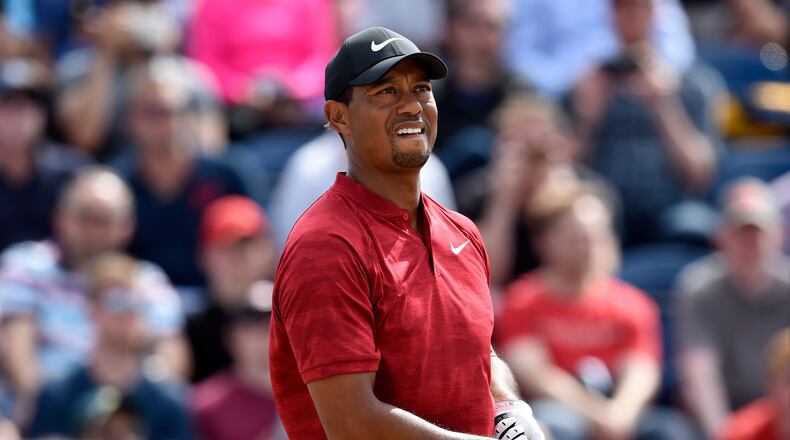Over the weekend Tiger Woods was in contention to win the British Open at Carnoustie, Scotland. He had a lead on the 11th hole before fading to a tie for sixth, three strokes behind winner Francesco Molinari.
But Woods had a real chance to win a major for the first time in a long time. Related:
"NBC drew a 5 rating in the Nielsen overnights from 9 a.m. to 2 p.m. ET, the biggest number since Woods completed the career Grand Slam by winning the open in 2000. The rating was up 38% from last year's final round. ... NBC says 33.9 million (minutes) were streamed, up 67% from last year, making it the most streamed golf event ever for NBC Sports."
This correlation between Woods playing well in a big tournament and more people watching is nothing new. There was a time when the "Tiger Effect" extended to the entire golf industry: higher tournament attendance, more recreational rounds played, increased youth participation, spikes in sales of golf equipment and apparel.
But that’s back when Woods was the best golfer in the world by a large margin. He was seemingly on track to soar past Jack Nicklaus’ record of 18 major championships. Woods has been stuck on 14 majors won since 2008 (!) and hasn’t won any tournament since 2013.
The Open answered any questions about whether Woods still is a draw after his game slipped for much of a decade. He was back in the hunt at a major and, just like that, the eyeballs returned to NBC’s telecast. After all these years, still nothing gets the casual fan to pay attention to golf like Woods making a charge on Sunday. And now you can add his comeback story to talent, race, and history as the sources of his appeal.
Woods inspired an entire generation of youth to take up golf seriously and emulate his long-hitting style. Some of those youngsters grew up to join the PGA Tour and were good enough to beat Woods at about the same time he began to succumb to injuries and the self-inflicted implosion of his personal life. (Serena Williams stirred a similar revolution in tennis but, unlike Woods, she fended off the youngsters and has shown little evidence of decline.)
At 42-years old, Woods no longer is in his prime. He is not the intimidating figure whose presence on a Sunday leaderboard prompted challengers to wilt as they heard the distant roar of galleries cheering Tiger’s inevitable charge. After gaining the lead on Sunday, Woods carded a double bogey on the 11th and a bogey on the 12th.
“I had a great opportunity,” Woods told reporters afterward. “I know it’s going to sting for a little bit here, but given where I was to where I am now, (I feel) blessed.”
The final round of the Open was entertaining. It was a good mix of extraordinary shots and human foibles. It was fascinating to see Molinari remain steady as chaos unfolded elsewhere. At one point six players were tied for the lead but Molinari was the only player in the field to post a bogey-free round.
I sometimes like to watch good golf but, if I’m being honest, Woods was the reason I stayed posted in front of my television for most of a sunny Sunday afternoon in July. After all these years, Tiger still has that effect.
About the Author
The Latest
Featured

